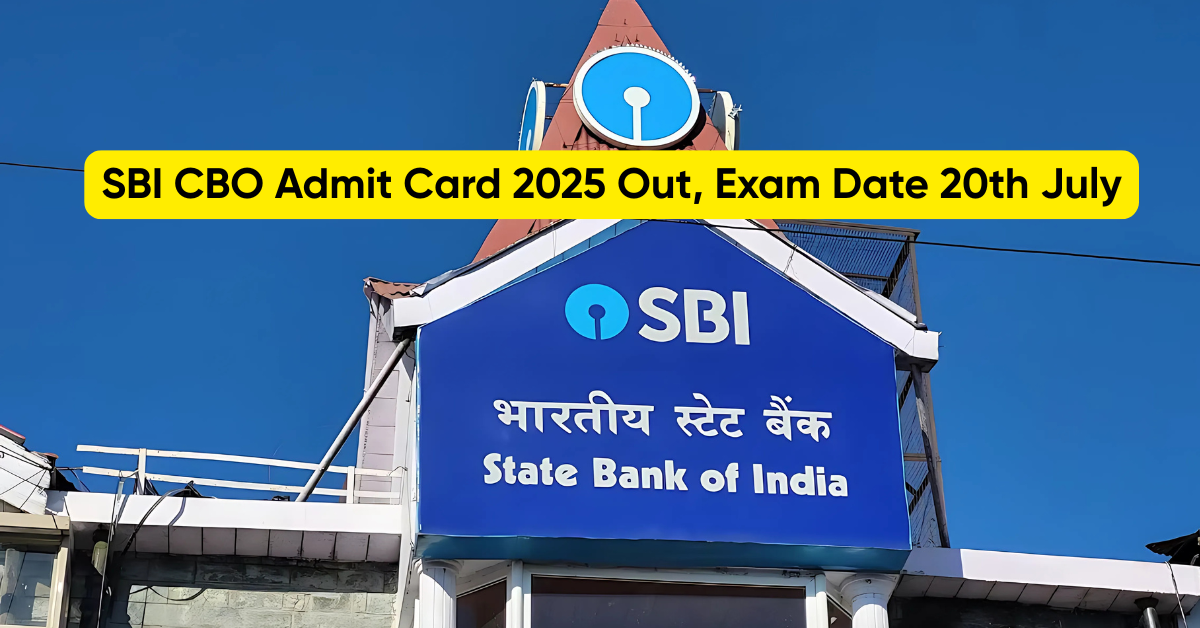Quant Formulas for Bank Exams: The Bank exams test a candidate’s numerical ability and problem-solving skills extensively. Since the quantitative section can be time-consuming, knowing key formulas and applying them correctly is crucial to performing well. Mastery of formulas not only speeds up calculations but also helps avoid common mistakes during exams. This article presents all the essential quantitative aptitude formulas organized by topic, with simple explanations and examples for better understanding and quick revision.
Why Are Quant Formulas Important in Bank Exams?
Formulas are the backbone of quantitative aptitude. They simplify complex problems into straightforward calculations and reduce the time required to solve questions. In competitive exams where every second counts, a good grasp of formulas can be the difference between clearing the cutoff and missing it. Moreover, formulas improve accuracy and build confidence. The benefits of knowing formulas in bank exams are-
- Speed: Bank exams have strict time limits. Knowing formulas helps in solving problems quickly without wasting time deriving relationships.
- Accuracy: Using the right formula reduces calculation errors.
- Confidence: Familiarity with formulas boosts confidence and reduces exam stress.
- Foundation for Practice: Understanding formulas aids in tackling variations of questions more efficiently.
Important Quant Formulas for Bank Exams
Below is the list of some important topics and formulas related to them.
1. Number System
The number system forms the foundation for many problems. Understanding the relationship between numbers, their factors, and multiples helps solve divisibility and remainder problems efficiently.
Formulas:
- LCM × HCF = Product of two numbers
- Divisibility Rules:
- Divisible by 3 if sum of digits divisible by 3
- Divisible by 9 if sum of digits divisible by 9
- Divisible by 11 if difference of sum of digits at odd and even places is multiple of 11
Example 1: Find the LCM and HCF of 12 and 18.
- Factors of 12 = 1, 2, 3, 4, 6, 12
- Factors of 18 = 1, 2, 3, 6, 9, 18
- HCF = 6
- LCM = (12 × 18) / 6 = 36
2. Percentage
Percentage calculations are widely used in financial and profit-loss related problems. Understanding how to increase or decrease quantities by a percentage is critical.
Formulas:
- Percentage = (Part / Whole) × 100
- Increase by x%: New value = Original × (1 + x/100)
- Decrease by x%: New value = Original × (1 – x/100)
- Successive % change = [(1 ± p/100)(1 ± q/100) – 1] × 100
Example 1: If the price of a product increases by 10%, what is the new price of an item costing ₹500?
New Price = 500 × (1 + 10/100) = 500 × 1.1 = ₹550
Example 2: An item’s price is decreased by 20%. If the original price is ₹1000, find the selling price.
Selling Price = 1000 × (1 – 20/100) = 1000 × 0.8 = ₹800
3. Profit and Loss
Profit and loss concepts are essential to solve questions on business transactions. Knowing the relationship between cost price, selling price, and profit or loss helps solve problems quickly.
Formulas:
- Profit = SP – CP
- Loss = CP – SP
- Profit % = (Profit / CP) × 100
- Loss % = (Loss / CP) × 100
- SP = CP + Profit or SP = CP – Loss
- SP after discount = MP × (1 – Discount/100)
Example 1: A product is bought for ₹200 and sold for ₹250. Find the profit percentage.
Profit = 250 – 200 = ₹50
Profit % = (50/200) × 100 = 25%
Example 2: A shopkeeper offers a 10% discount on the marked price of ₹500. What is the selling price?
SP = 500 × (1 – 10/100) = 500 × 0.9 = ₹450
4. Simple Interest and Compound Interest
Interest calculations are key for banking exams, especially questions on loans and investments. Understanding both simple and compound interest formulas can help answer time-based interest problems.
Formulas:
- Simple Interest (SI) = (P × R × T) / 100
- Amount under SI = P + SI
- Compound Interest (CI) = P × (1 + R/100)^T – P
Example 1: Find the simple interest on ₹10,000 at 5% per annum for 3 years.
SI = (10,000 × 5 × 3) / 100 = ₹1500
Example 2: Find the compound amount for ₹5,000 at 10% per annum for 2 years.
Amount = 5000 × (1 + 10/100)^2 = 5000 × 1.21 = ₹6050
CI = 6050 – 5000 = ₹1050
5. Time, Speed, and Distance
Questions involving time, speed, and distance are common. Understanding their interrelation helps in solving problems on travel, average speed, and relative speed.
Formulas:
- Distance = Speed × Time
- Speed = Distance / Time
- Time = Distance / Speed
- Average Speed (when distance is equal) = 2 × (Speed1 × Speed2) / (Speed1 + Speed2)
- Conversion: 1 km/h = 5/18 m/s
Example 1: A car travels 120 km in 2 hours. Find its speed.
Speed = 120 / 2 = 60 km/h
Example 2: A man travels 60 km downstream in 2 hours and returns in 3 hours. Find average speed.
Downstream speed = 60/2 = 30 km/h
Upstream speed = 60/3 = 20 km/h
Average speed = 2 × 30 × 20 / (30 + 20) = 1200 / 50 = 24 km/h
6. Boat and Stream
When a boat travels in a stream, its effective speed changes due to the current’s velocity. These formulas help solve problems involving upstream and downstream travel.
Formulas:
- Speed of Boat in Still Water = bbb
- Speed of Stream = sss
- Downstream speed = b+sb + sb+s
- Upstream speed = b−sb – sb−s
- Time = Distance / Speed
- Average speed for equal distances upstream and downstream = 2bsb+s\frac{2bs}{b + s}b+s2bs
Example 1: A boat’s speed in still water is 10 km/h. Stream speed is 2 km/h. Find its speed downstream and upstream.
Downstream speed = 10 + 2 = 12 km/h
Upstream speed = 10 – 2 = 8 km/h
Example 2: Time taken to go 18 km downstream and 18 km upstream is 5 hours. Find the speed of boat in still water if stream speed is 3 km/h.
Let boat speed = b km/h
Time downstream = 18 / (b + 3)
Time upstream = 18 / (b – 3)
Total time = 18/(b+3) + 18/(b-3) = 5
Solve for b:
18b+3+18b−3=5\frac{18}{b+3} + \frac{18}{b-3} = 5b+318+b−318=5
Multiplying through:
18(b−3)+18(b+3)=5(b+3)(b−3)18(b-3) + 18(b+3) = 5(b+3)(b-3)18(b−3)+18(b+3)=5(b+3)(b−3)
18b−54+18b+54=5(b2−9)18b – 54 + 18b + 54 = 5(b^2 – 9)18b−54+18b+54=5(b2−9)
36b=5b2−4536b = 5b^2 – 4536b=5b2−45
5b2−36b−45=05b^2 – 36b – 45 = 05b2−36b−45=0
Solve quadratic for b (positive root): b=9b = 9b=9 km/h
7. Time and Work
Time and work formulas help in solving problems where multiple persons work together or separately to complete a task.
Formulas:
- Work done = Rate × Time
- Work done by A in 1 day = 1/x (if A finishes work in x days)
- Work done by A and B together = 1/x + 1/y
- Total time by both = 1 / (1/x + 1/y)
Example 1: A can do a work in 10 days, B in 15 days. How long will they take together?
Work/day by A = 1/10
Work/day by B = 1/15
Together = 1/10 + 1/15 = (3 + 2)/30 = 5/30 = 1/6
Time = 6 days
8. Averages
Average is used to find the central value of a data set. Weighted averages take into account different weights assigned to values.
Formulas:
- Average = (Sum of observations) / (Number of observations)
- Weighted Average = (Sum of value × weight) / (Sum of weights)
Example 1: Find average of 10, 20, 30, 40, and 50.
Sum = 150
Average = 150 / 5 = 30
9. Ratio and Proportion
Ratios express the relative sizes of two quantities. Compound ratios combine multiple ratios.
Formulas:
- If a:b = x:y, then a = kx and b = ky
- Compound ratio = Multiply corresponding terms
Example 1: If a:b = 2:3 and b:c = 4:5, find a:b:c.
b = 3k and b = 4m → 3k = 4m
Let k = 4 and m = 3 (LCM of 3 and 4)
a:b:c = 2×4 : 3×4 : 5×3 = 8:12:15
10. Geometry Basics
Geometry questions test knowledge of areas, volumes, and perimeters of shapes.
Formulas:
- Area of triangle = 1/2 × base × height
- Area of rectangle = length × breadth
- Area of circle = πr²
- Circumference = 2πr
- Volume of cube = side³
- Volume of cylinder = πr²h
Example 1: Find the area of a triangle with base 10 cm and height 5 cm.
Area = 1/2 × 10 × 5 = 25 cm²
11. Miscellaneous (Probability)
Probability measures the likelihood of an event.
Formula:
- Probability = Number of favorable outcomes / Total outcomes
Example 1: Probability of getting a 3 when rolling a die = 1/6
Quant Formulas for Bank Exams Free E-Book
This e-book summarizes key formulas used in quantitative aptitude topics like percentages, profit & loss, simple interest, time & work, geometry, algebra, and more. It serves as a quick reference guide for students preparing for competitive exams or brushing up on math fundamentals. Download the free e-book PDF below.
Tips for Mastering Quantitative Aptitude for Bank Exams
- Memorize formulas thoroughly: Write them down repeatedly and revise regularly.
- Practice regularly: Apply formulas to solve a variety of problems.
- Understand concepts: Don’t just memorize; understand how formulas are derived and when to use them.
- Time management: Practice timed quizzes to improve speed.
- Use shortcuts: Learn quick calculation tricks for percentages, simplification, and approximations.
- Take mock tests: Analyze your performance and identify weak areas.
- SBI CBO Sectional Timing 2025, Know Subject-wise Timings

- SBI CBO Last Minute Tips Before Exam, Check Now

- SBI CBO 2025 Shift Timings, Exam Instructions & Documents to Carry

- SBI CBO General Awareness, Know Important Topics Before Exam

- SBI CBO Admit Card 2025 Out, Exam Date 20th July

- Error Detection Questions for SBI PO Exam 2025


The most comprehensive online preparation portal for MBA, Banking and Government exams. Explore a range of mock tests and study material at www.oliveboard.in
